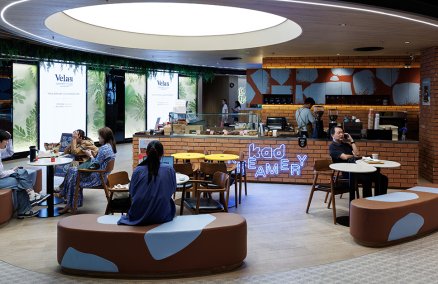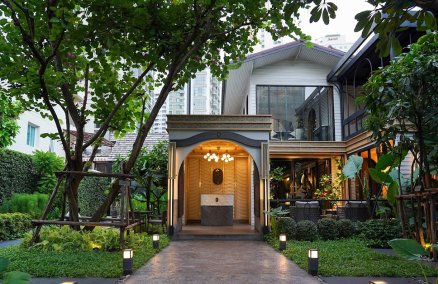Why did bamboo first draw your interest?
After two years working as an architect, I was pretty tired of traveling between my office in Huay Kwang and my home in the Rama VII area. I was at a crossroads. I was always into natural resources as my dad loved to grow plants, but the floods in 2004 killed all of them. Then four years ago my friend sent me information about a bamboo workshop hosted by Bambooroo, an architecture and construction firm in Chiang Mai. I’ve worked with bamboo ever since.
Where did you learn about the special qualities of bamboo?
Bamboo requires great craftsmanship. I spend a lot time talking with craftsmen to learn their techniques and studying different kinds of bamboo suitable for construction. I’ve learnt a lot from ethnic groups up North, like the Karen people. Attending Arsom Silp Institute of the Arts, I also got the low-down on a human-friendly bamboo treatment that uses borax to change the chemical status of the sugar in bamboo so that weevils no longer eat it and the construction lasts longer. I applied this technique at my first project, Cool Down Resort Chiang Mai.
What are your main bamboo sources?
Though Thailand has more than 70 types of local bamboo, I mainly use two types: phai tong [sweet bamboo] and phai liang [hedge bamboo], which I source from Nakhon Nayok and Kanchanaburi, as they are close to my factory in Nonthaburi. That said, the bamboo grown at higher altitudes up North is far bigger and stronger, but it costs much more logistically.
How is bamboo construction environmentally friendly?
The growth rate is about five times faster than normal trees. When we use it, we cut only 30-percent of a cluster so that next year we can come back to cut it again. And of course, it’s reuseable.
Farm Stage
Tell us about your project at Wonderfruit?
I’m working on three projects there including the main Farm Stage, which is the most challenging project I’ve ever done. Designed by PO-D Architects, the 15-meter-high bamboo construction takes inspiration from the Isaan tradition where farmers build ornate rice palaces from leftover rice straw. The most challenging thing was making sure the structure could take weight without compromising on the beautiful curved design. Another one I designed myself is Quarry, which is an after-hours zone that is designed to look like a hidden forest with visual mapping to complement the DJs.
Quarry
What’s the future of bamboo design in Thailand?
It’s definitely growing in terms of designers. The green trend isn’t going away. Many young Thai designers are thinking of ways to use bamboo in public spaces, libraries and schools. But there’s a shortage of skilled craftsmen. Those with good techniques are hard to find, and young designers aren’t willing enough to learn from them. Spending hours drawing beautiful designs on a computer won’t result in amazing bamboo structures without the technical know-how. Meanwhile, European and American architects have long been interested in bamboo construction, but they don’t have the bamboo resources that Asia does. Moreover, bamboo in hot countries like ours is stronger than those in cold countries like China or Japan, which use bamboo in craftwork rather than construction. Bamboo is like steel that you can grow. We’re in a unique situation, if designers are willing to advance their knowledge.

















